|
Nat is an outstanding father. I’d like to nominate him for an award in the forthcoming Father’s Day recognition festivities surrounding the birthday of HM the King on December 5, but I don’t know how to do that. So, I’ll just let you know what I would say to a committee if I could.
For the past year Nat has set his own life aside for his daughter Pen. She was born 14 months ago, the cutest, happiest baby in the world. However, she had some presenting issues including a hair lip (you can probably tell from the picture that it was successfully corrected); that was just the beginning, however. Within a couple of months pediatricians at Maha Raj Medical Center and Chiang Mai University were concerned about little Pen’s development. They sent off a DNA sample to the laboratories at Chulalongkorn University in Bangkok and the results were shocking. Pen has a genetic condition called “autosomal recessive spinal muscular atrophy (level 2)”. SMA for short. This means that her muscular development is inhibited as the result of a rare recessive genetic trait she inherited from both her parents. The prognosis is that there is no reliable probability of recovery. The common term for her most obvious symptoms, the Internet informed me, is “floppy baby” syndrome. At level 2 the report warned, “there are no cases where the patient has been able to walk” but she may be able to sit up and carry on. The most optimistic outlook for Pen’s future is life on wheels. But the specialists said that the family must guard against infections because the baby will not be able to cough and expel phlegm. One needs muscles for that. It was not long before the first crisis developed. Pen had to be rushed to a hospital to have congestion pumped out and resultant infection brought under control. That’s when Nat quit his job as an x-ray technician in a district hospital and became fully-dedicated to his daughter, with the continuing help of grandmothers. Nat’s career was on a steep upward trajectory. Medical technology is a field in demand, and Nat was being trained for rapid advancement, but never mind. Aem, his wife, who would have preferred to be the primary care-giver, was being inducted into the civil service as a teacher and that was too valuable a career track to forfeit, with its job security and benefits for the whole family. So Nat took the role. It is three crises later. Two of them had to be handled at hospitals far away because all the beds in the pediatric intensive care unit of the medical center were full. This time the hospital specialists moved things around and she has been admitted and given a tracheotomy to facilitate her breathing. For a one-year-old Pen has been through a lot, but this report is about the admiration I feel for Nat, Aem and the family, rather than sympathy for Pen that nearly overwhelms us. Nat has had to acquire skills he never dreamed he’d need; things like how to inject liquid through a feeding tube, how to monitor the baby’s oxygen level, and how to suction. He’ll be a more well-rounded medical assistant than he had intended. To be succinct, the family has set aside all its plans and finances for this new challenge. Their universe has shrunk. Now the scope is day-to-day. Each day has challenges and hospital life has become the new normal. Visiting hours are noon to one-thirty, and a couple of hours in the evening. Nat’s life revolves around that, and the most distant target is no farther than how soon this crisis will be over and they can bring Pen back home to the room they have dedicated to her safety and comfort, where Nat and the grandmothers will become nurses again. My hands are chapped from applauding this outstanding father and the family that supports him. Note: Click on the two images above to expand them to full view.
0 Comments
Nung is known by our group of friends as “Big One” to distinguish him from numerous other sons nicknamed “nung” indicating their birth order. Nung is “ambiguous” above all else. He is a guy who uses feminine pronouns and a gambler who is a spiritualist in his spare time (or is it the other way around?). Nothing about big Nung is obvious at first glance except his exceptional size, about which he is sensitive. On this day, however, Nung is the center of attention. He is the organizer of a cultural event that puts him in a class apart.
The day begins with the dedication of a shrine. The shrine looks like a small booth with a tile roof and three walls made of laths. In this case the shrine is too small for a person to enter, even a child, but there is a temporary platform beside it for the day’s activities. The shrine was dedicated by offerings which signified the nature of the veneration being undertaken. Among other gifts of fruit and cigars, there was a pig’s head. This was not a strictly Buddhist ceremony. Indeed, the presence of Buddhist monks would be brief and unusual. The main event, however, was a dance or series of dances that lasted for hours from morning until nearly sunset. It involved about 40 dancers, similarly clad in floor-length sarongs with brightly colored shirts and matching head scarves. The colors were bright, the dance music was lively, and the movements were sinuous. None of the dancers seemed to be paying much attention to others, but there was an informal synchronization of their movements. By afternoon everyone was dancing. The seating area near the shrine was abandoned. Throughout the morning Nung or one of the other better-known practitioners had been occupied with individual conferences. The content of the conversations varied from humiliatingly personal to boringly general. The form was predictably about problems and resolutions. The practitioners funneled advice from the beyond to reply authoritatively while usually puffing on one of the cigars. Nung is locally well-known for his accuracy. Each conferee presented him with paper money which he wore strung around his neck for the rest of the day. A few days later Nung organized another event in a village on the other side of the district at which more than a hundred dancers gathered. Events differ. Some of them are more like séances. There are two things I would like to make clear at this point. First, at no time did I see anybody dancing in a trance-like condition. There were none who seemed to be out of touch with immediate reality, or in a frenzied state. Second, I did not see any of the practitioners indicating that they were channeling voices from the beyond. This was just one of the more ordinary and very common fawn yoke kru (dance to elevate a teacher) ceremonies here in North Thailand. But as an observer, it was clear that the ethnic origins of this dance were Burmese, Mon to be precise, as indicated by the composition of the musicians and the style of costumes. Just below the surface all of low-land ethnic traditions, art and culture here in the North are Burmese-Tai-Lao that was simply called Lanna until less than a century ago. The best thing written for popular consumption about this aspect of Thai faith is “Mediums & Shamans: Psychic consultants peddle ancient remedies to modern society” by Philip Cornwel-Smith in Very Thai: Everyday Popular Culture Bangkok: River Books, 2005. Cornwel-Smith’s sample is small but he has excellent corroboration from Thai scholars and good pictures by his colleague John Gross. From Very Thai, we learn that there are upwards of 100,000 khon song practitioners (“mediums”, called khon song jao around here indicating they are supernatural). If this were a separate religion it would be the second largest in the country with scores of believers for each practitioner, and with a wide variety of practices in addition to spirit dances. The jao referred to here in Chiang Mai is the same “lord” that is worshiped in the ubiquitous “spirit houses” Thailand is known for. Cornwel-Smith dances around his subject, implying skepticism without outright ridicule. Others are not so cautious. To many, spirit dances and spirit mediums are clear signs of religious decadence and superstition. They are laughable. However, ambivalent as most ordinary Thai people I know may be, they are not laughing. As with all other types of supernatural faith practices, there is an element of the hypothetical about them. They are treated as if they might be valid and as if they might be important. They are not as central as Buddhism, but when Buddhism gets too staid there are dances to liven things up. Money trees are not as rare as it might seem. I have heard all my life that “money doesn’t grow on trees” but I can testify that it very often gets transported to Buddhist temples that way here in Thailand. As the pictures accompanying this essay bear witness, a lot of work and creativity goes into preparing these trees. In the picture above there are two types of money frames, designed to look like bushes and like peacocks. The reason for this particular, elaborate presentation of picturesque funds to the temple was to support the construction of a chapel on the temple grounds of Wat Jam Jaeng in San Pa Tong District of Chiang Mai. In this case, a large donation was the impetus but people from several nearby villages more than doubled the total amount. People worked long hours to make the frames and mount the money. They reminded me, as they showed them off, how proud they were to have been able to do this because the skills to make these birds are disappearing.
Although a large event like the one above may be infrequent, many temples have some sort of fund-raising event every year. This is the season for ton salak ceremonies. A “ton” is a tree or bush or plant. “Salak” refers to a drawing or selection by lot. All families in the village are invited to present a decorated tree for the event. On the tree a variety of useful small items will be hung and money will be inserted as well. For our ton salak ceremony a week ago (pictured below) priests from 7 other temples were invited to come. Everyone had an equal chance to have their tree, large or small, drawn for one of the other temples. It was considered good luck and an honor to have one’s tree picked. The rest of the trees stayed at the home temple or were sold (without the cash attached) to be re-used. The money will pay such things as electricity bills for the temple. The trees can be a specially prepared branch from a tree, but typically is a “trunk” made of tough grass wrapped tightly into which are stuck stiff branches whittled out of bamboo and covered with frilly crepe paper. The prominent feature of the tree, aside from the attached gifts, is hand-crafted paper flowers. Here in Thailand the faithful make donations on several occasions to support the temple and its programs. In general, the government does not provide funds for the ongoing operation of a temple, but might help if a temple needs renovation. Finally, these money trees make eloquent statements about how the people feel about their contributions of money. The money is consecrated by being presented in this way. The money is no longer ordinary, but dedicated to a lofty and sacred purpose. Every religion has offertories, some have been very primal. In Thai Buddhism the symbolism is deeply cultural and subtle. To make this sort of offering a whole community must unite. The artistry employed in the displays reflects community spirit that rises above individual intention. Money tree ceremonies are eloquent testimony against the charge that Buddhism has no social aspect since it is all about one’s path to enlightenment. Thai Buddhism is above all, social. It can be truly said that temples get money plucked from trees. A well-known abbot from Chiang Mai was sitting in my guest area this afternoon. Among the observations that he made was that lots of Buddhists here in North Thailand still participate in merit making, but many fewer than used to be the case “practice the vows”. This year at his temple there were none staying overnight during the Lenten retreat going on now during the rainy season. They come to hear the sermon and join in the chanting but go around to other temples for the nightly sessions.
In other words they are working to accumulate merit, but not to improve their spiritual lives. Meditation is a major feature of Lenten practice for those who stay in temples either throughout Lent as ordinands or for 48 hour periods on the holy days on the quarters of the moon. Lent begins with Asanha Pucha Day, which was July 11 this year, and ends with the full moon in October, which will be October 8. Traditionally monks stay in their temples following the instruction of the Compassionate Buddha to keep his followers from trampling through the rice fields during the rainy period when the new rice was being planted. This gives the monks a chance to improve their knowledge and skills, as well. Laity take 5 or 8 vows (5 if they are going to have 3 meals a day, but 8 if they plan to live more ascetically). Our young friend in the picture entered a temple at the beginning of Lent. He was taken to the temple by family and friends and left there. The journey was a reiteration of that made by the Lord Buddha when he left his palace-home and royal family to seek the Truth. He left home a prince, was shorn of his luxurious locks, and donned the rags of an ascetic. In some ethnic sub-cultures this trip from home to temple is a major cultural event. Rather than white, the “princes” are dressed in rich royal brocades and lace. In any case it is a re-enactment of that original sacred journey (“sacramental”, Christians would say), a vicarious renunciation of mundane attachments, and a mystic union with the Lord Buddha. We visited our friend that night in the temple. The next morning he was ordained and exchanged the white garments of purity for the saffron robes of a monk, or in his case the robes of a novice. In this process he earned “inestimable merit” and transferred it solemnly to his mother and ancestors, while retaining some for himself and gaining more through the ceremonies of the two days of initiation. That, in fact, was what this exercise was about. He did not remain a monk for the whole Lenten period as some of us had urged him to do. He did not stay in the temple long enough to master any of the many forms of mindfulness meditation, to learn Pali language to become a scholar of Buddhist texts, to memorize enough chants to serve as a lay liturgist (i.e. ajan wat), or to master self control (which he certainly could use, in fact). He was a short-term monk. It was the most his mother could hope for but it compensated her for some of the concerns he had visited upon her as a troubled son. There is another group of young people who also enter the temple for reasons having little to do with learning the complex truths of Dharma. They are there because of the need for an education they could not otherwise obtain. Many temples try to receive a few deserving fellows and provide them the things they need to study. Most of the boys taken care of in this way around here are ordained as novices and stay in the temple during the several years they are in school. It amounts to the community providing funding for these students. Since they are ordained, the merit the community makes is an order greater than it would be if they were just “temple kids” (i.e. dek wat). Naturally, this popular emphasis on merit over Dharma is seen as a problem, as it was for our esteemed guest this afternoon. It is always a concern for religious leaders when people give lesser matters the greater emphasis. It’s just that the people who do that are the ones who provide the finances and human resources to sustain the institution of Buddhism hereabouts. It is wrong to insist that religious events are all about doctrine and religion. Merit is a concept that is far older than Buddhism. How merit is earned and works is arguably not strictly a Buddhist concept; it is certainly not a precept. But it is part of the faith strands that are braided to form Thai Buddhism. Let me try to be clear about what this means. Culture and doctrine are inextricably mixed to form a living religion. They cannot be extruded one from the other. There is no religionless culture, even if it is atheistic and ostensibly godless (but that is another topic for another essay). The point here is that there is no cultureless religion. Yet, when a religion is taken into another culture, a new culture is brewed. When Buddhism came to the Dvaravati city-state federation, the dominant Mon culture of the region was due to change. When the Roman Empire adopted Christianity, at about the same time as mainland South East Asia became Buddhist, there were adaptations. But those changes were not total. When it works best and most thoroughly, core doctrines and identifying practices become infused in the new milieu over the course of centuries. Whenever some other process than gradual infusion is forced, unspeakable violence is inevitable. You do not have to read history books to see this. Just turn on the TV. During the last week of August 2014 things came to a head for Daniel Pierce of Kennesaw, Georgia, USA. A year ago he had “come out” to his family. Apparently they did not accept that as well as Daniel had thought they did. Last week they demanded that he go into a reparative therapy program to “pray the gay away”. The conversation did not go well.
|
AuthorRev. Dr. Kenneth Dobson posts his weekly reflections on this blog. Archives
March 2024
Categories |
| Ken Dobson's Queer Ruminations from Thailand |
|


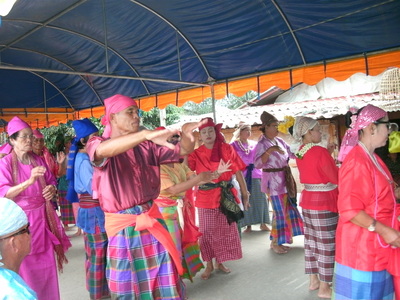
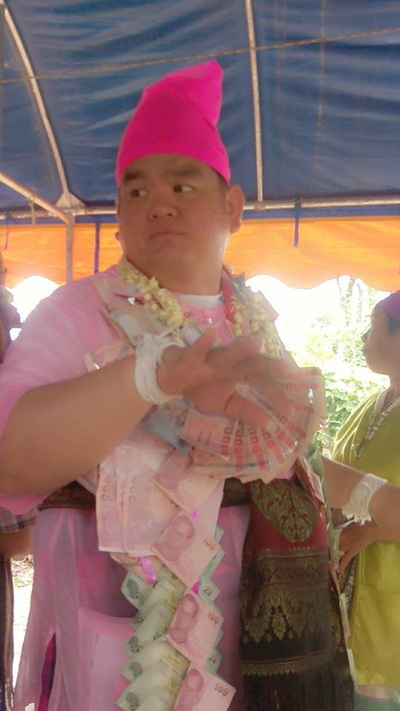
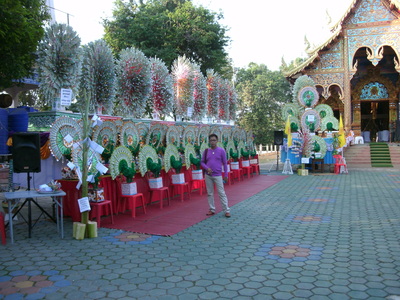
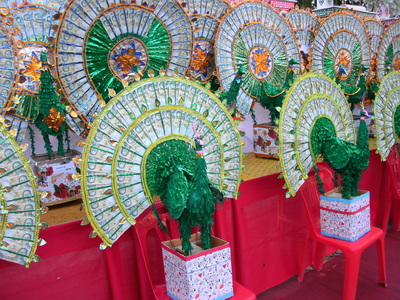
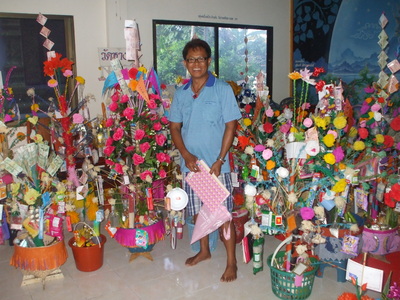
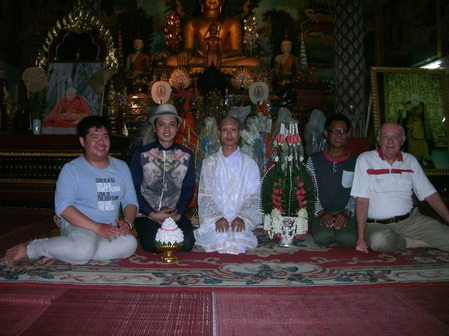
 RSS Feed
RSS Feed
